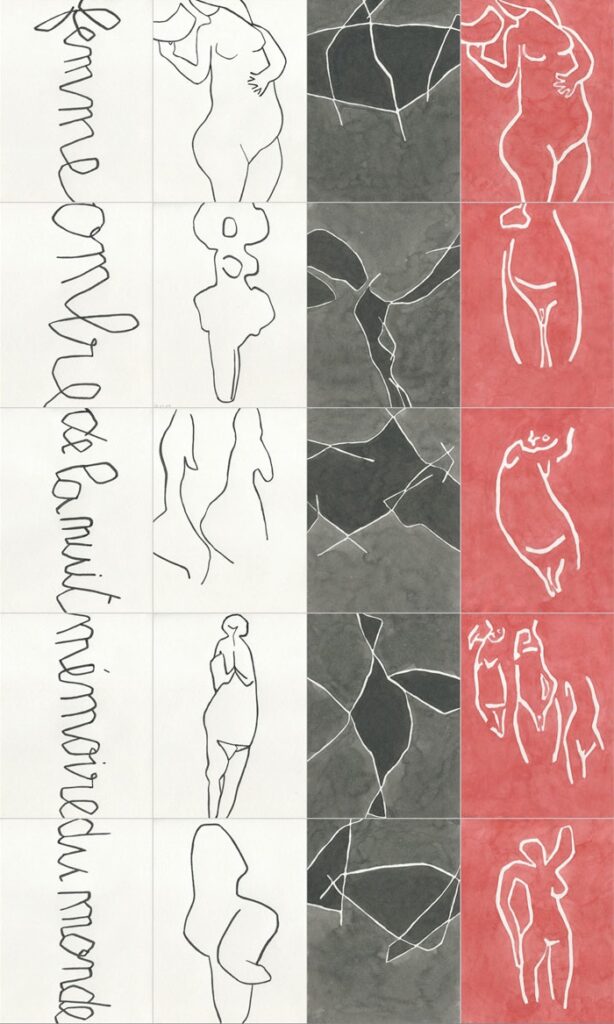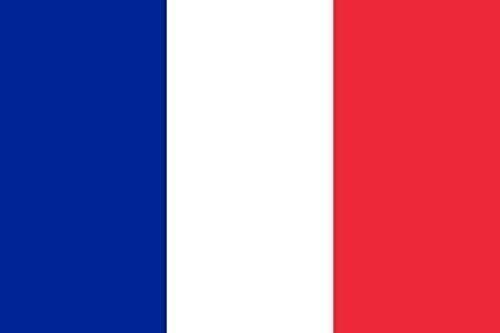Woman,
Memory of the world
Memory of the art.
Never in the story of humanity has the image of the female body occupied our visual and media space so much, to the point of finding itself at the center of a conflict, political and religious, which is tearing our time apart.
However, contemporary art, in its quest for the insignificant, seems to have forgotten how much, modelled, sculpted, drawn, painted, across millennia and continents, the representation of its beauty has sublimated our sexuality and structured our cultures.
Renée Martine Crappier reconnects with this transcendence through this return to the sources of creation. By the simplicity and strength of her line, by the richness and fragility of her talent, she reconciles, without unnecessary provocation, modesty and sensuality. Showing that if her body is not the origin of the world, the woman is indeed that of humanity.
Woman, hope of the world. Hope of the art.
PC
Woman,
Memory of the world
Memory of the art.
Never in the story of humanity has the image of the female body occupied our visual and media space so much, to the point of finding itself at the center of a conflict, political and religious, which is tearing our time apart.
However, contemporary art, in its quest for the insignificant, seems to have forgotten how much, modelled, sculpted, drawn, painted, across millennia and continents, the representation of its beauty has sublimated our sexuality and structured our cultures.
Renée Martine Crappier reconnects with this transcendence through this return to the sources of creation. By the simplicity and strength of her line, by the richness and fragility of her talent, she reconciles, without unnecessary provocation, modesty and sensuality. Showing that if her body is not the origin of the world, the woman is indeed that of humanity. Woman, hope of the world. Hope of the art.
PC

Memory of the world
Woman
Shadow of the night
Memory of the world
RMC
For 20 years now, Renée Martine Crappier has been pursuing in prehistory, far from the wanderings of contemporary art, a journey that has allowed her to reconnect with the deep meaning of her work. Along the way, she came across the ladies of those ancient times and brought them back to life, continuing with her stroke that of their authors.
From rock shelters to caves, from museums to books, she wondered for a long time about their story, almost always told by men who made them mother goddesses or Venuses, made by other men. Why wouldn’t they be totemic or shamanic figures as some are imbued with vital force? Why wouldn’t it be women who would have sculpted them, engraved them, to tell their life as women, in a world where they had no reason to be subject to men? A world of which, whatever their place, these female figures are the deep memory.
Poem painting.
Poem paintings are unique artist books, designed to compose a panel but whose elements are presented in the form of a booklet. This one includes 5 calligraphies and 15 paintings in gouache or Indian ink A5 format.
Panel size 75×105 cm
Laussel rock shelter
The Laussel site is a rock shelter located in the commune of Marquay, a stone’s throw from Les Eyzies-de-Tayac, the heart of our prehistory. Excavated in 1911 and 1912, it yielded in particular five blocks of ornate stone 25,000 years old, the most famous of which is that of the Venus with the horn, to which are added The Hunter, the « Venus with the checkered head », the « Venus of the playing card » and the Venus of Berlin supposedly missing in 1945, but which is probably in Russia. RMC has reinterpreted and renamed them in its own way. Here’s what she tells us:
The Laussel rock shelter
Of course I don’t know anything, nobody knows
anything about this place destroyed with a pickaxe. How for me to approach this past, if not by drawing these women coming out
of the stones like symbols of life, assembly of enigmatic, static women, made
of symbols which belonged to them, rituals of passages always restarted from a
life to the feminine: girl, woman , mother, tutelary ancestor.
RMC
Laussel rock shelteR
The Laussel site is a rock shelter located in the commune of Marquay, a stone’s throw from Les Eyzies-de-Tayac, the heart of our prehistory. Excavated in 1911 and 1912, it yielded in particular five blocks of ornate stone 25,000 years old, the most famous of which is that of the Venus with the horn, to which are added The Hunter, the « Venus with the checkered head », the « Venus of the playing card » and the Venus of Berlin supposedly missing in 1945, but which is probably in Russia. RMC has reinterpreted and renamed them in its own way. Here’s what she tells us:
« The Laussel rock shelter
Of course I don’t know anything, nobody knows anything about this place destroyed with a pickaxe. How for me to approach this past, if not by drawing these women coming out of the stones like symbols of life, assembly of enigmatic, static women, made of symbols which belonged to them, rituals of passages always restarted from a life to the feminine: girl, woman , mother, tutelary ancestor. »
Bird Lady.
Ancient Egypt. El Ma’Maria site. Predynastic period. 5500 BP.
Much closer to us, this ancestor of the Nuba dancing girls, an emblematic object of the Brooklyn Museum.
Here is what RMC says about her:
« Little woman with a bird’s head, in red terracotta, drawn, among several others, while browsing Claudine Cohen’s book, « The Woman of Origins », this book which made me hope for an ancient world led by women in peace. Then encountered on a winter and snowy day in the Brooklyn Museum, touching sculpture enclosed in a glass box. Drawn again when return to France, in my studio, and freed by my hands to dance on paper.
Several unique artist books were born from this encounter. They were acquired by the Brooklyn Museum library in 2009.
PC
Bird Lady.
Ancient Egypt. El Ma’Maria site. Predynastic period. 5500 BP.
Much closer to us, this ancestor of the Nuba dancing girls, an emblematic object of the Brooklyn Museum.
Here is what RMC says about her:
« Little woman with a bird’s head, in red terracotta, drawn, among several others, while browsing Claudine Cohen’s book, « The Woman of Origins », this book which made me hope for an ancient world led by women in peace. Then encountered on a winter and snowy day in the Brooklyn Museum, touching sculpture enclosed in a glass box. Drawn again when return to France, in my studio, and freed by my hands to dance on paper.
Several unique artist books were born from this encounter. They were acquired by the Brooklyn Museum library in 2009.
PC
